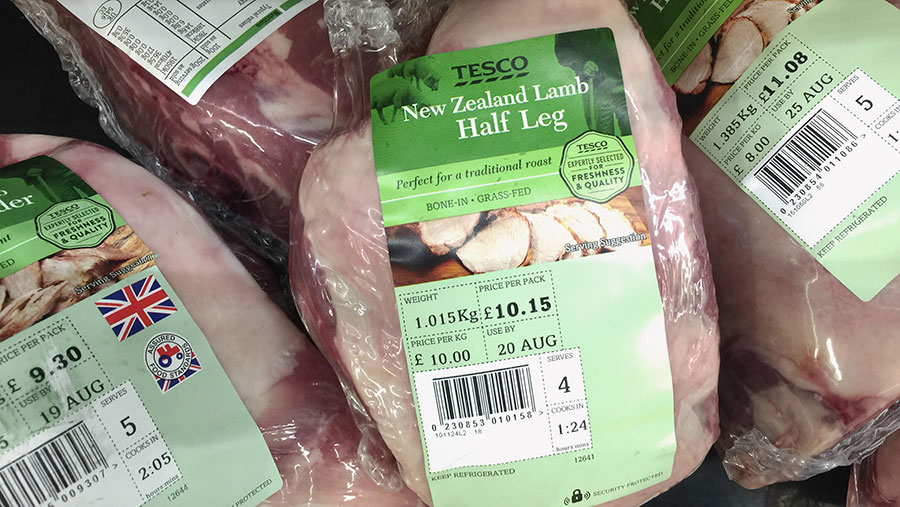Frozen NZ lamb brings jitters with trade back £15
 © Tim Scrivener
© Tim Scrivener Shipments of frozen southern-hemisphere lamb have eroded liveweight prices and underlined the Covid-19 pandemic’s continued effect on markets, as well as Britain’s post-Brexit vulnerability.
The GB liveweight SQQ dropped back by 9p/kg to average 231.6p/kg for the week ending 10 January – a two-month low.
Store lambs are back by £20 on the year at an average £68 a head.
This is against a backdrop of post-Christmas blues, inflationary pressure on consumers and HMRC confirming an 11% hike in New Zealand lamb imports in the year to October.
NFU livestock adviser John Royle explained how two factors were affecting the market:
- Covid pandemic Lengthy lockdowns in China and a volatile economy has diverted Chinese-bound product to the UK/EU
- Trade deals New Zealand and Australia are likely to focus on Chinese and Asian markets in the long term, but enough existing tariff-free access leaves UK sheep farmers vulnerable to the trade.
NZ quota
New Zealand ships about 50% of its current 114,000t quota and poses less risk than the Australia free-trade agreement, which is set to almost quadruple its quota from 8,000t to 30,000t in the first year alone.
Mr Royle said a surge of imports was the “last thing we need”, given domestic demand pressures, but explained that supermarket pledges to source British were for fresh lamb, not frozen.
Positive outlook
Phil Stocker, National Sheep Association chief executive, said: “One good thing is New Zealand isn’t dumping lamb here at low prices yet, and let’s hope this doesn’t happen.”
Reports suggest supply into the EU is steady, but consumption was also being hindered by inflation. Mr Stocker remained hopeful of an improving trade later in the month.
European lamb started the year 30% dearer than it did two years ago at £6.61/kg deadweight, about £1/kg more expensive than UK base prices.
Jonny Williams, joint business director at the co-operative FarmStock, said lamb sales had been flying, but a higher price would be necessary in the longer term for store finishers.
Forage and fertiliser woes may have led some dairy farms to order lambs off keep earlier, stressing that a lot of different factors were contributing to the slow lamb trade, he said.
Mr Williams listed some factors that could underpin lamb trade in the coming months:
- Early lambers are reporting low scan results – this could contain supply through the spring
- Currency strength is supporting exports (£1 = €1.13)
- Festival demand overlaps this spring. Ramadan (22 March-21 April), Easter Sunday (9 April) and Eid-al-Fitr (21-22 April).
